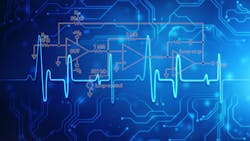What is the Essence of Quiescent Current? (Download)
For an electronic circuit, a quiet state is one in which the circuit isn’t driving any load and its inputs aren’t cycling. Most commonly used for the specification in a datasheet, quiescent current is the current consumed by a circuit when it’s in a quiescent state.
Quiescent current (IQ) also can be defined as the current consumed by an IC in the no-load and non-switching but enabled state. Generally, quiescent current is the input current consumed by the IC in any ultra-low-power consumption state.
Furthermore, IQ is the current needed to power a low-dropout (LDO) IC’s internal circuitry when the external load current is zero. Many designers may mistake quiescent current as shutdown current, which is the current drawn when a device is turned off with the battery still connected to the system. The amount of IQ is determined by the topology of the device, input voltage, and temperature. So, essentially, IQ = IIN at no load.
